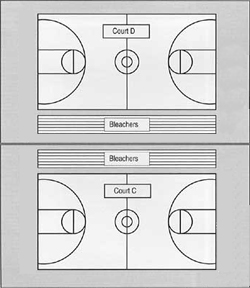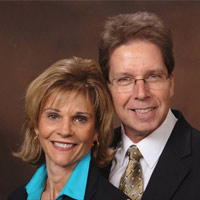If acoustic parameters sometimes seem difficult to grasp, this practical example should help clarify at least one of them, the Limiting Distance, DL.
This is a parameter associated with reverberant spaces, such as gyms and churches with little absorption.
Remember that in such spaces there will exist a reverberant sound field LR, that is uniform throughout the space, as well as specific reflections that are not.
If a loudspeaker or other acoustic source is used to excite the space, there will be a localizable (you can tell where it is coming from) direct sound field L from that device for those in close proximity to it.
For a steady sound source, as the listener moves farther away from the acoustic source, the direct sound level drops, but the reverberant level stays the same.
The distance at which they are equal is called the Critical Distance, DC At about 3 times DC the direct field is almost completely masked by the reverberant field, to the point that it is difficult if not impossible to localize the sound source.

This is called the Limiting Distance, DL, and can be found by DL = 3.16 DC in ft or mwhich is the point at which the LD has dropped 10 dB from what it is at DL.
Our local high school has a large, multi-purpose athletic facility where multiple sporting events are often held simultaneously, usually some combination of basketball, wrestling, cheerleading practice, etc. The room has very little absorption, and a significant reverberant field exists.
Its diffuseness is easily evaluated from the scoreboard “buzzer” that sounds to end periods of play. This is quite a nice test stimulus (covers the voice range and is long enough in duration to build a steady reverberant field). The “tail” of the decay can be evaluated for diffuseness (an “airy” character) or reflectiveness (a “mechanical” character).
The problem is that with a low directivity source (such as a referee’s whistle) the limiting distance is less than 60 feet. This means that if two basketball games are played at the same time, play often stops on both courts when the whistle is blown on either!
The players or the fans can’t localize it, because they are beyond the limiting distance and the level is the same throughout the room. As such, all directional clues are obscured. The solution for this space is to apply absorption to the corrugated metal ceiling.
This could easily have been done during design and construction, but would be very costly now. Anyone who designs a gymnasium without absorption on the ceiling (at least) should have to play in it!





















